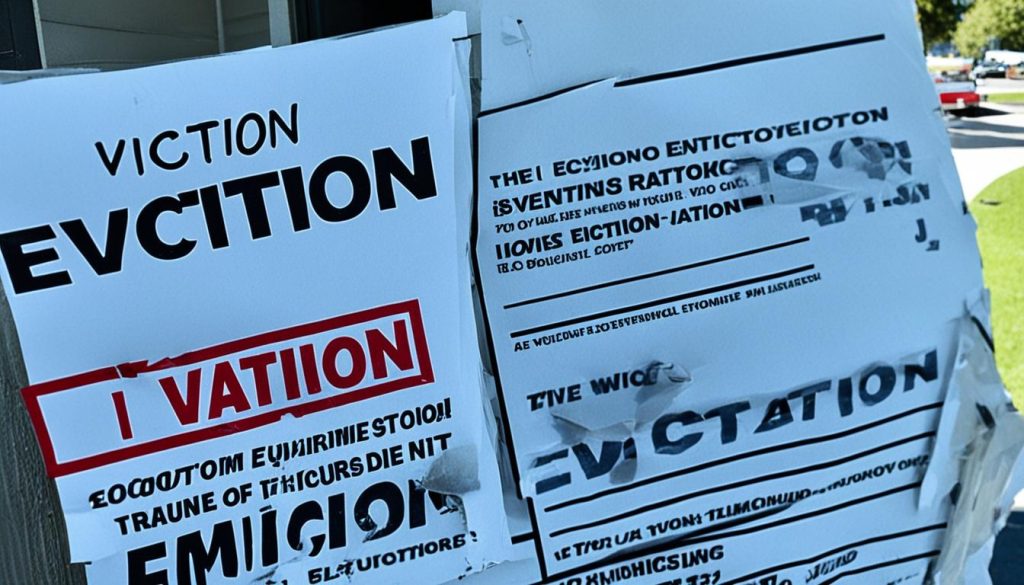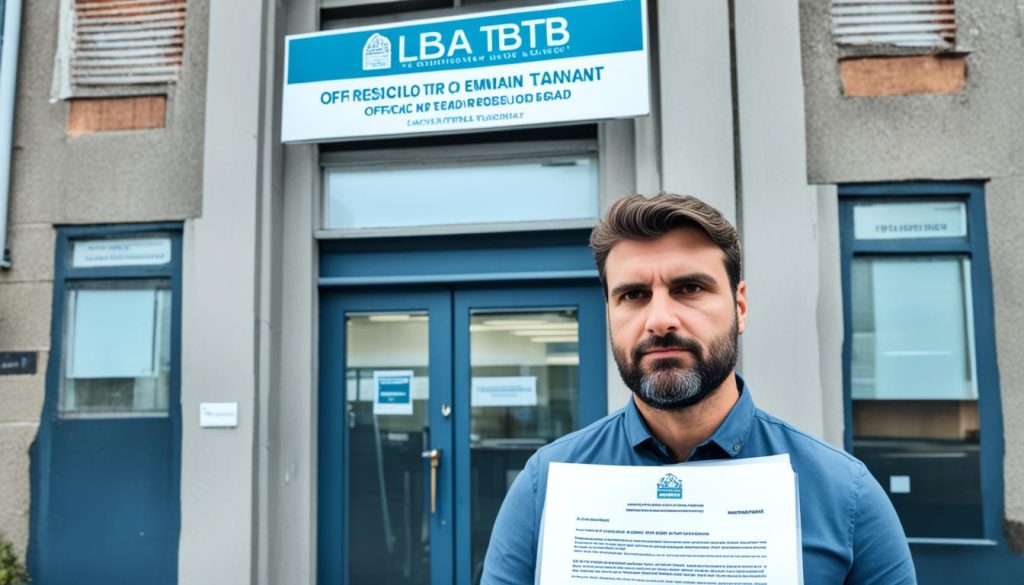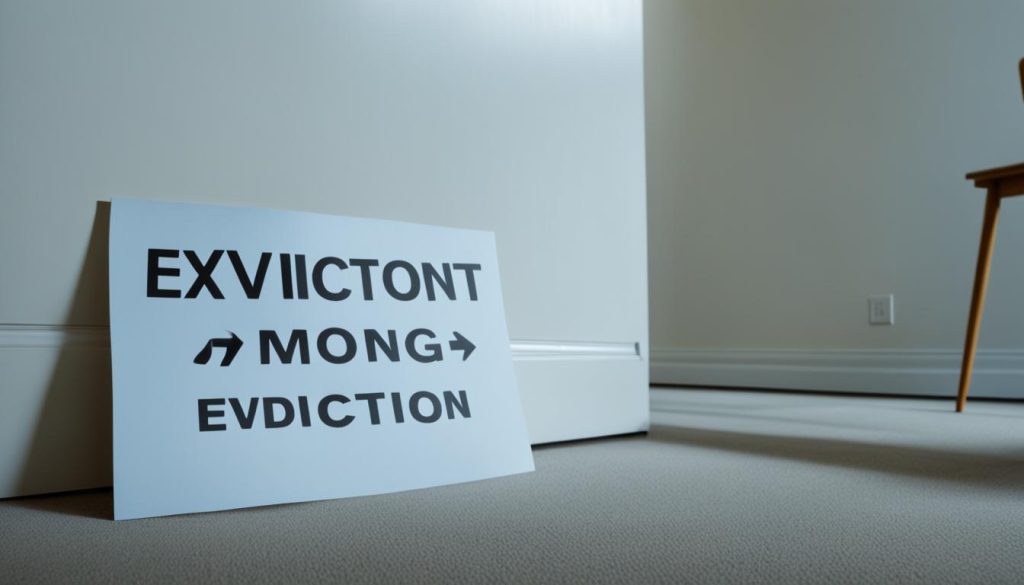Are you a landlord in Ontario who is facing the challenging situation of having to evict a tenant? The eviction process can be complex and time-consuming, with mandatory legal procedures that must be followed to ensure a successful eviction. Understanding the legal process to evict a tenant is crucial for every landlord in Ontario. In this article, we will guide you through the steps involved in evicting a tenant in Ontario, including how long it can take, how to give notice to the tenant to vacate, and the necessary eviction procedures. Whether you’re a new landlord or an experienced one, this comprehensive guide will equip you with the knowledge you need to navigate the eviction process smoothly and effectively. So, let’s dive in and learn how to evict a tenant in Ontario!
Understanding Tenancy Agreements in Ontario
In Ontario, understanding rental agreements is key. You need to know about different tenancy agreements and their associated rights. This includes fixed-term and automatic renewals. We’ll go over these in detail to help both landlords and tenants know what they can and can’t do.
Fixed Term Tenancy
A fixed-term tenancy is when both parties agree on a specific rental period, usually a year. It involves setting clear start and end dates for the rental. This gives everyone a firm understanding of the tenancy’s duration.
Renewing a Lease
When a fixed-term lease ends, it doesn’t always mean the tenant has to leave. The agreement might roll over to a month-to-month or week-to-week basis. During this time, most original lease terms stay in effect.
Another option is to sign on for another fixed term or start a new lease. Any changes must comply with the law. This keeps things fair for both landlords and tenants.
Security of Tenancy
Tenants enjoy some stability; they can stay in the rental until they choose to leave, both parties agree, or the landlord legally ends the tenancy. If the tenant receives an eviction notice, they have a chance to explain their side at a hearing. This could include reasons why they need more time to find a new home.
Agreement to End a Tenancy
In Ontario, a landlord and a tenant can decide to end a lease early. They can do this at any point, even if it’s during the lease’s term. It’s a good idea to have a written agreement to prevent any confusion. But, a landlord can’t force a tenant to, unless it’s for some specific cases like student housing or care homes.
If Tenant Changes Their Mind
Let’s say a tenant and landlord agree to end the lease, but the tenant backs out. The tenant can then ask the landlord if they can continue the rental. If they can’t agree to keep it going, and the tenant won’t leave, the landlord might seek eviction orders from the Landlord and Tenant Board (LTB). This can happen without warning the tenant.
Notice to End a Tenancy
In Ontario, landlords have to follow specific steps to end a tenancy legally. They must give written notice and state the reason clearly.
Landlord Must Give Proper Notice
Landlords must fill out the right notice form from the Landlord and Tenant Board. It must be complete and correct. Incorrect or incomplete notices might not count, so landlords must start over if there are mistakes.
Reasons for Ending a Tenancy
According to the law, landlords can end a tenancy for several reasons. These can include not paying rent, doing illegal things, causing a lot of damage, or needing the unit themselves. Sometimes, the unit might need big repairs or updates.
When the Landlord Must Give Notice
The time a landlord must give notice depends on why they are ending the tenancy. Sometimes, tenants can get up to 4 months’ notice. However, the time is always set by the law.
Voiding a Notice
If the reason for leaving is because of something a tenant did, they might be able to fix things and stay. But there are cases where a tenant can’t do anything to keep the rental agreement.

Applying to the LTB
If a tenant refuses to move out once the landlord has served them a notice, the landlord can take the matter to the Landlord and Tenant Board (LTB). The LTB will hold a hearing to decide if the rental should be ended. They look into the case carefully.
Applying for Approval to End the Tenancy
The landlord needs to show proof as to why they want to end the tenancy when they apply to the LTB. This proof could be about not paying rent, doing illegal things, or needing big repairs. The LTB will check this and set a date for hearing their case. Both sides, the landlord and the tenant, can share what they think at this hearing.

If the LTB finds the landlord’s reason good enough, they will give an order for eviction. But the tenant can still come to the hearing. They can say why they shouldn’t be evicted or ask for more time to leave. This is their right.
How to Evict a Tenant in Ontario?
Landlords in Ontario can’t evict tenants on their own. The Landlord and Tenant Board (LTB) must approve an eviction. To do this, landlords must go through a set process that includes several important steps.
First, landlords need a solid reason to evict, like not paying rent or causing damage. They must prove this reason to the LTB.
Then, a written notice must be served to the tenant. This notice has to include the termination reason and move-out date. If the tenant doesn’t leave by then, the landlord can ask the LTB to end the tenancy.
At the LTB hearing, both parties get to explain their side. The LTB will review everything and make a decision. They will issue an order that says whether the tenant has to leave.
Once the LTB orders eviction, the tenant should leave by the given date. If they don’t, the landlord can’t force them out. They have to get the Sheriff’s office to remove the tenant legally.

The Eviction Process in Ontario
Understanding how to evict a tenant in Ontario is complex. Landlords must carefully follow all legal steps. The key is having a valid reason to remove a tenant from their rental.
Step 1: Reason for Eviction
Landlords need a solid reason to start eviction. This could be due to missed rent, illegal actions, or severe damage. They must show evidence at the Landlord and Tenant Board (LTB).
Step 2: Give Tenant Written Notice
Using a notice from the LTB, landlords must inform tenants in writing of the eviction. The notice will outline the reason and eviction date clearly.
Step 3: File Application with the Landlord Tenant Board
If the tenant doesn’t resolve the issue by the date, the landlord can file with the LTB. This application must normally arrive at the LTB within 30 days, except for rent issues.
Step 4: Attend the Hearing
A hearing will be set up by the LTB to consider the eviction. Both landlord and tenant can state their case. They might choose mediation too.
Step 5: Eviction Order
The LTB will decide if the tenant should be evicted. They’ll issue an order with any special terms. If the tenant pays missed rent in time, eviction might not happen.
Step 6: Enforcing the Eviction Order
If the tenant doesn’t move out by the decided time, the landlord must involve the Sheriff. The Sheriff will then legally evict the tenant. No personal eviction methods are allowed by the landlord.

Timelines for Evicting a Tenant
Evicting a tenant in Ontario is both complex and time-intensive. It typically takes 85 to 138 days from the eviction notice. This goes up to 168 days if the Sheriff needs to step in.
Several crucial steps dot the process timeline. These include notifying the tenant in writing, filing with the Landlord and Tenant Board (LTB), attending a hearing, and getting the eviction order. The process’s length can change based on each case’s details.
| Eviction Process Step | Approximate Timeline |
|---|---|
| Providing written notice to the tenant | Varies based on the reason for eviction |
| Filing an application with the LTB | 30 days (except for non-payment of rent) |
| Attending the LTB hearing | 45-60 days |
| Receiving the eviction order | 10-15 days |
| Enforcing the eviction order (through the Sheriff’s office) | Up to 28 days |
Remember, these timelines are rough estimates and might change. Landlords should expect the eviction process to last several months. It’s wise to consider possible delays or complications.
Cost of Evicting a Tenant
Evicting a tenant in Ontario can get expensive for landlords. It comes with several fees and the chance of losing rent.
The main costs include an application fee to the Landlord and Tenant Board (LTB). This fee is between $190 and $175. Landlords may also have to pay the Sheriff about $400 to carry out the eviction.
Landlords might also need to pay for legal help, which can be around $2,000. This cost changes with the case’s complexity and the legal approach used.
Losing rental income during the eviction process is a big financial hit. The process usually takes between 85 to 168 days. During this time, landlords could miss out on many months of rent.
The average total cost of evicting a tenant in Ontario is about $2,600. This doesn’t count the lost rental income, which could be much more.
| Expense | Cost |
|---|---|
| LTB Application Fee (in-person) | $190 |
| LTB Application Fee (online) | $175 |
| Sheriff’s Fees | $400 |
| Legal Fees (average) | $2,000 |
| Total Average Cost (excluding lost rent) | $2,600 |
Landlords should think carefully about the costs of evicting. They need to compare these costs with the benefits of getting the rental unit back. Getting legal advice from a professional can make the eviction process easier and reduce the financial stress.
Special Considerations for Winter Evictions
In Ontario, winter evictions are allowed by law. But the Landlord and Tenant Board might be more understanding when it’s cold. They know being evicted in winter has bigger challenges.
If a tenant faces losing their home in winter, the Board might delay the move-out date. They could get more time to find a new place. This is mainly when the eviction means they would have no proper shelter in winter.
Landlords need to show a good reason for eviction to the Board. They must prove they tried to help the tenant find a new home. The Board cares deeply about helping vulnerable tenants stay safe, especially in winter.
Common Reasons for Eviction
Landlords in Ontario may aim to evict tenants for various real reasons. These reasons are detailed in the Residential Tenancies Act. Knowing these reasons can help both sides understand the legal process better.
1. Non-Payment of Rent
Not paying rent is the top reason for eviction in Ontario. Tenants must pay their rent fully and on time. Otherwise, the landlord can start the eviction process.
2. Illegal Activity
If a tenant or their guest does something illegal on the property, they could be evicted. This includes any crime or breaking local or provincial laws.
3. Excessive Damage
Tenants must keep their unit in good shape. They are responsible for damage that’s not just from everyday use. If they damage the place a lot, landlords can evict them.
4. Overcrowding
If too many people live in a unit, it’s against the rules. The landlord will ask to fix this problem. If not fixed, it could lead to eviction.
5. Disturbing Others
Disrupting the peace for others could cause eviction. This includes making too much noise or harassing others in the building.
6. Personal Use by Landlord
Landlords may need the unit for their own use or for a family member. In such cases, the tenant might need to leave.
7. Personal Use by Purchaser
If the landlord sells the place and the new owner wants to live there, the tenant will have to move out.
8. Major Repairs or Renovations
Eviction can happen if the place needs major repairs or renovations. And if the work requires the unit to be empty, the tenant must leave.
9. Demolition
Eviction is allowed if the landlord plans to tear down the unit or building.
Conclusion
The eviction process in Ontario has many detailed steps. Landlords need a good reason and must give written notice. They must file with the Landlord and Tenant Board and go to a hearing. Then, they must get an eviction order before the Sheriff can help.
This whole process can take months and be very expensive for landlords. It also means they miss out on rent money.
It’s wise for landlords to get legal advice to make sure they do everything right. Knowing the rules and timeline for evictions in Ontario is key. It helps them avoid big mistakes and protect their rights.
Evicting a tenant is tough and can take a long time. It’s best for landlords to try to solve things without going to court. Mediation can often help find a solution that works for everyone. This way, they might not need to evict someone.
FAQ
1. What is the easiest way to evict a tenant in Ontario?
Evicting a tenant in Ontario is not simple. Landlords need to follow the law. They must use the Landlord and Tenant Board (LTB) process. This includes giving the tenant written notice, applying to the LTB, attending a hearing, and getting an eviction order.
2. How long can it take to evict a tenant in Ontario?
In Ontario, evicting someone can take quite a while. From the time a notice is given, it can be 85 to 138 days. And it could take up to 168 days if the Sheriff has to get involved to remove the tenant. This process involves providing notice, filing with the LTB, a hearing, getting the eviction order, and enforcing it.
3. What is the minimum notice to evict a tenant in Ontario?
The notice needed to evict a tenant varies. It depends on why the tenancy is being ended. Landlords must use the right form from the LTB. They need to give the tenant enough notice, which could be from 10 to 60 days.
4. How do I give notice to a tenant to vacate in Ontario?
Landlords should use LTB’s notice form to inform the tenant the lease will end. The notice must clearly say why the tenant is being evicted and when they need to leave.
5. Can I give 30 days notice to evict a tenant in Ontario?
Sometimes landlords can give a 30-days notice without giving a reason. This is for monthly or weekly tenants. But, if there’s a fixed term or a specific reason, the notice period will be different.
6. What form do I need to evict a tenant in Ontario?
You must use the right form from the Landlord and Tenant Board. The form you use depends on why you’re kicking out the tenant. For example, you’d use the N4 for rent issues or N12 if you need the unit for yourself.




